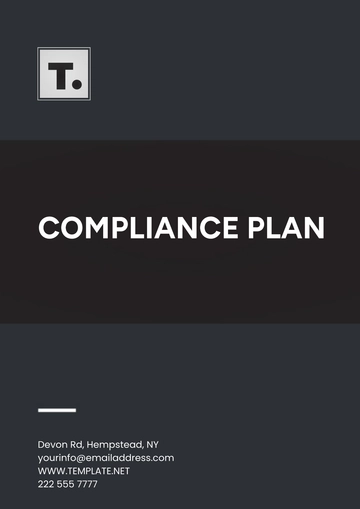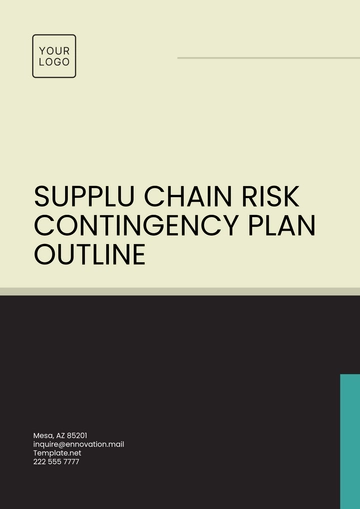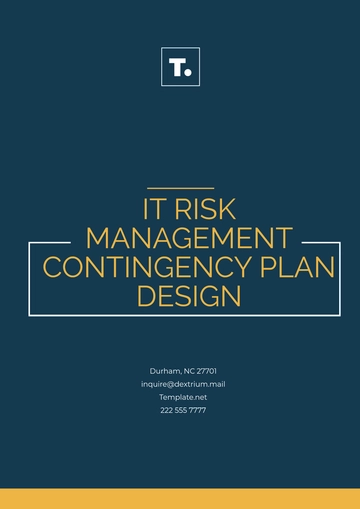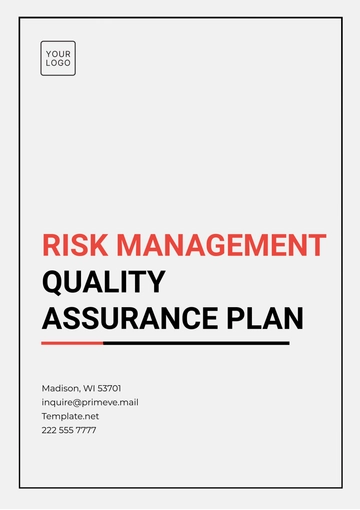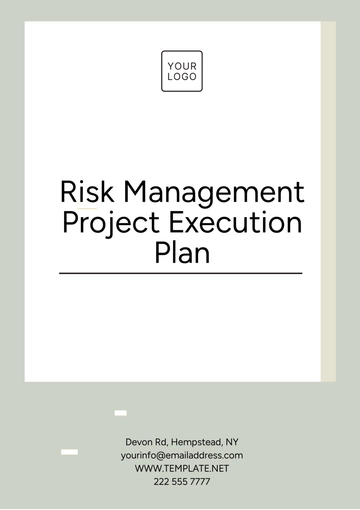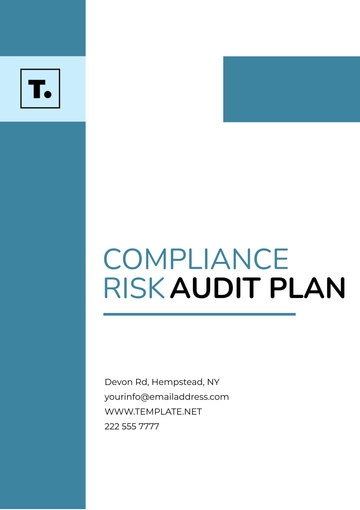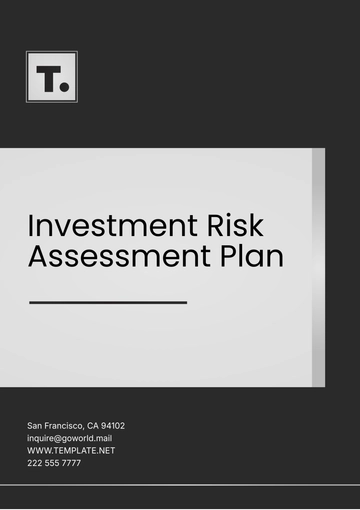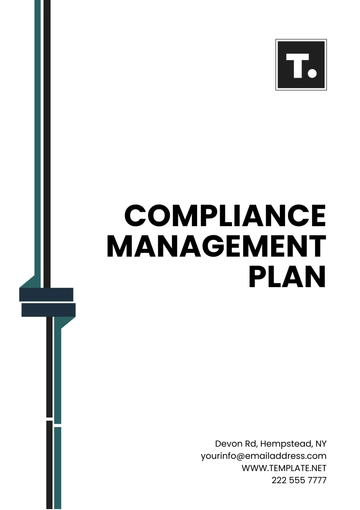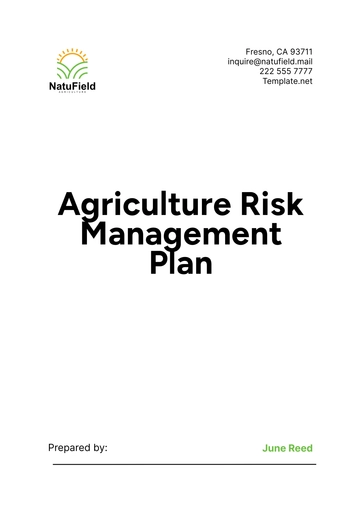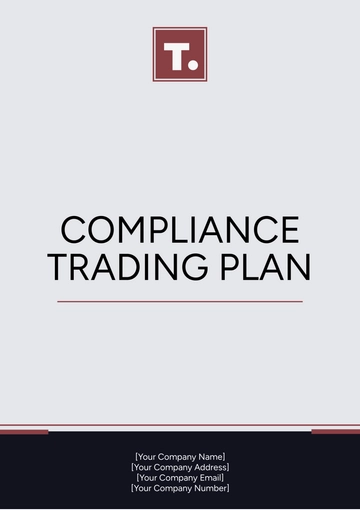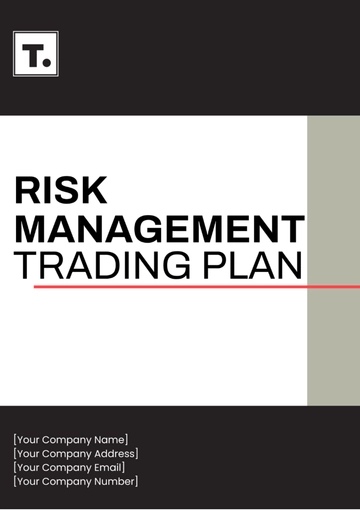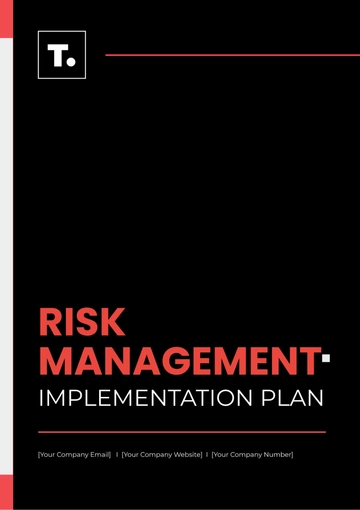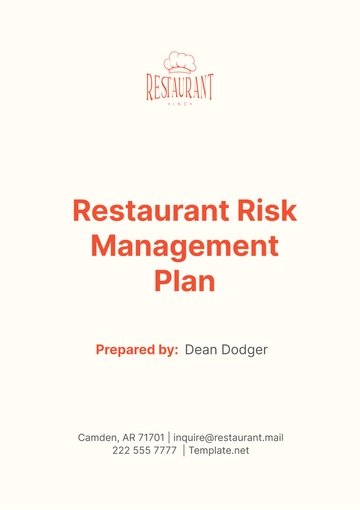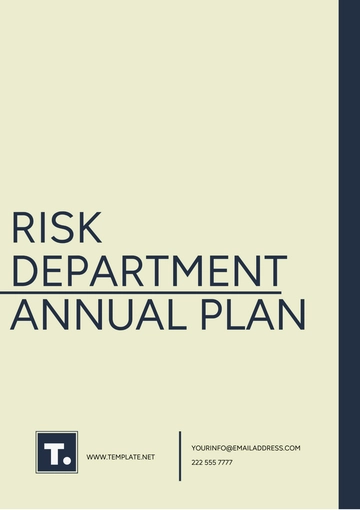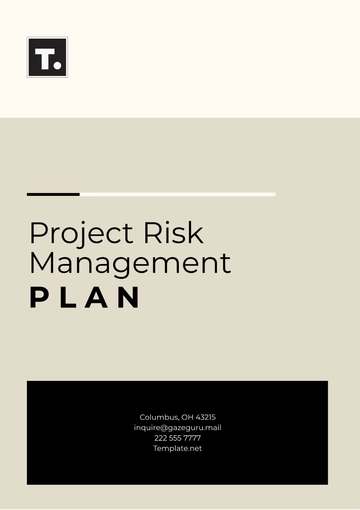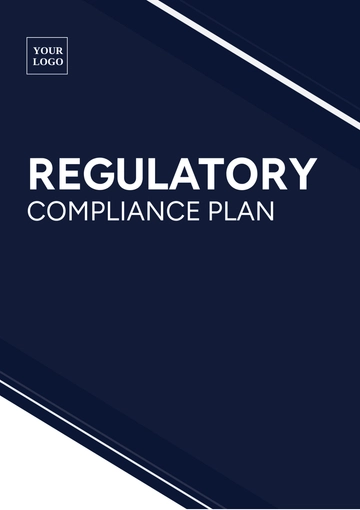Free Agriculture Risk Management Plan
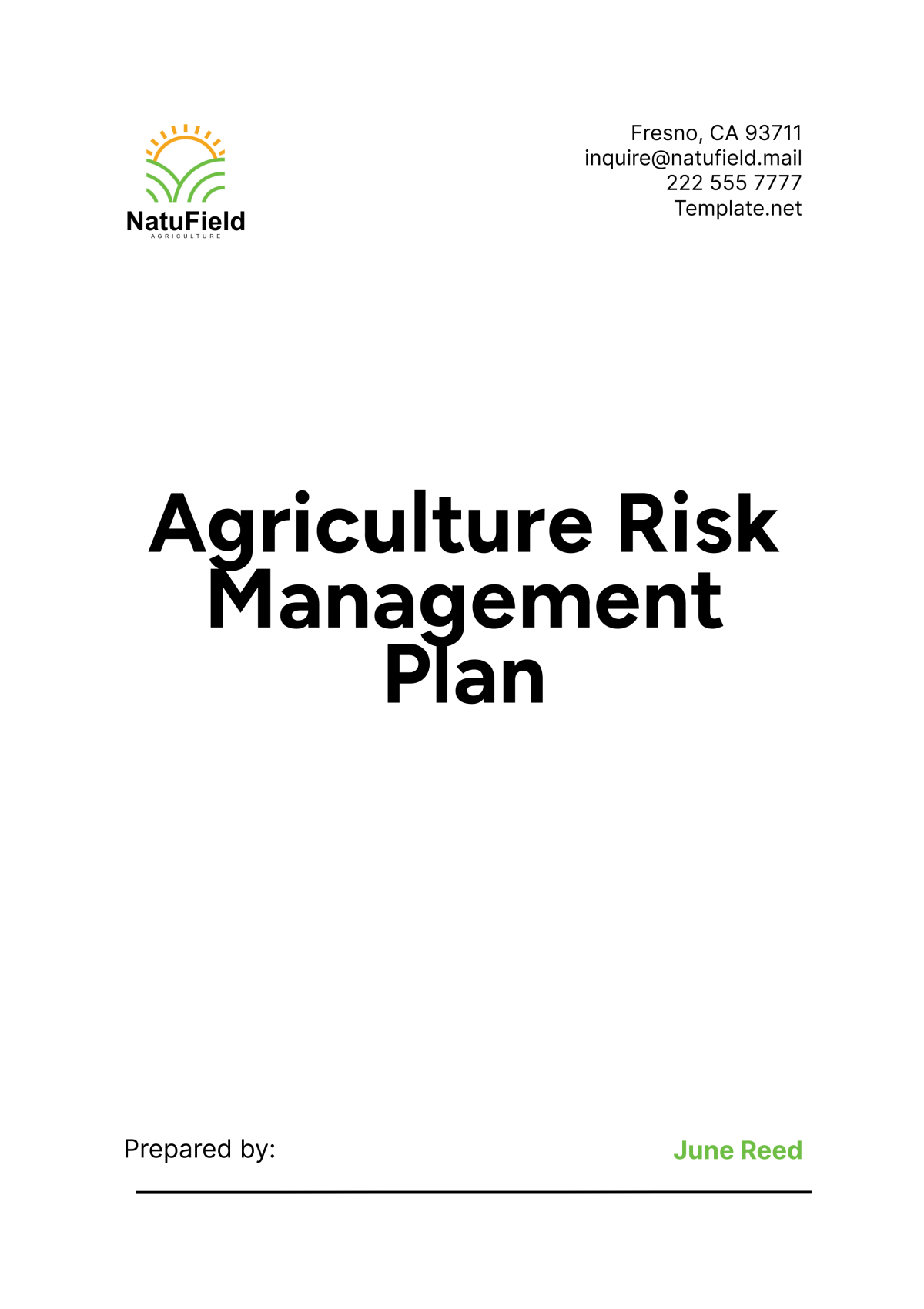
I. Introduction
A. Purpose of the Risk Management Plan
The Agriculture Risk Management Plan (ARMP) is crucial for [Your Company Name] to proactively identify potential risks and implement strategies to mitigate their impact on agricultural operations. By systematically assessing and addressing risks such as weather extremes, market volatility, and operational disruptions, we aim to safeguard crop yields, ensure financial stability, and maintain sustainable farming practices. This plan serves as a guide to enhance resilience and adaptability in a dynamic agricultural environment, supporting our commitment to delivering high-quality produce and meeting market demands efficiently.
B. Scope and Coverage
This comprehensive plan covers all stages of production at [Your Company Name], from soil preparation to post-harvest handling, encompassing crops such as wheat, corn, and soybeans. It includes risk factors related to natural disasters, economic fluctuations, and logistical challenges, ensuring that every aspect of farm operations is considered in our risk management strategies. By addressing risks proactively, we aim to minimize disruptions, optimize resource allocation, and uphold our commitment to sustainable agricultural practices that benefit both the environment and our community.
II. Risk Identification
A. Natural Risks
Weather-related Risks
[Your Company Name] contends with a variety of weather patterns that can fluctuate unpredictably, such as periods of drought and sudden, intense storms. These environmental factors have the potential to adversely affect the health and productivity of crops. By comprehensively analyzing local climate trends alongside historical weather data, we are better equipped to foresee and address these challenges. This knowledge enables us to implement effective irrigation management at opportune moments and to select crop varieties that are well-suited to the specific conditions of the region. These strategic actions help us to mitigate the risks posed by unfavorable weather, thereby safeguarding crop health and maximizing yield.
Pest and Disease Outbreaks
The agricultural land, commonly referred to as the farm, is particularly vulnerable to various types of pests, including small insects like aphids. Additionally, it is prone to a range of diseases, such as those caused by fungal infections. These pests and diseases have the potential to spread at an alarming rate, leading to widespread destruction of the crops cultivated on the farm. Consequently, it becomes imperative to conduct regular and meticulous monitoring of the farm. Moreover, implementing integrated pest management strategies is crucial. These strategies involve a combination of techniques and practices that are designed to detect the early signs of pest infestation or disease outbreaks. By doing so, effective control measures can be put into place promptly, thereby minimizing the extent of damage caused to the crops and ensuring the overall health and productivity of the farm.
B. Market Risks
Price Fluctuations
[Your Company Name], conducts its business within a highly volatile market that is significantly influenced by the intricate dynamics of global supply and demand. This variability is often observed in the fluctuating prices of key commodities such as soybeans, which can oscillate due to a myriad of factors including weather conditions, geopolitical events, and international trade policies. Similarly, the prices of livestock exhibit considerable volatility, influenced by seasonal trends, health epidemics, and changes in consumer preferences. These fluctuations have a direct impact on the company's revenue streams, potentially creating financial uncertainty.
To address market volatility, [Your Company Name] employs forward contracts to lock in commodity and livestock prices, providing price stability and predictable financial planning. Additionally, by diversifying its product range, the company spreads risk and taps into broader market opportunities, reducing dependency on single products. These strategies ensure stable pricing and sustained growth in a fluctuating market.
Market Demand Shifts
Transformations in consumer preferences towards organic or locally sourced products can significantly influence the volume of sales as well as the pricing strategies employed. To effectively navigate these evolving trends, it is crucial for us to remain closely attuned to market developments and possess the ability to modify our production strategies with flexibility. By doing so, we can swiftly respond to changes in consumer demand, thereby ensuring that we maintain our market relevance and uphold our profitability in the long run.
C. Operational Risks
Machinery Breakdowns
Dependence on farm equipment makes us vulnerable to mechanical failures, which can disrupt planting, harvesting, and other critical operations. Scheduled maintenance and backup equipment readiness are integral to minimizing downtime and ensuring operational efficiency during peak seasons.
Labor Shortages
The availability and reliability of seasonal labor can fluctuate, affecting planting, harvesting, and overall farm productivity. Developing contingency plans, such as cross-training staff and exploring mechanization options, helps mitigate risks associated with labor shortages and maintain productivity levels throughout the farming calendar.
III. Risk Assessment
A. Likelihood of Occurrence
The probability of each recognized risk is evaluated by examining historical data, current environmental conditions, and prevailing market trends. Through this comprehensive assessment, we are able to determine the relative importance of each risk. This evaluation allows us to strategically prioritize these risks and allocate resources in an optimal manner, thereby minimizing their potential impact on farm operations and enhancing profitability.
B. Potential Impact
Financial Impact
Risks are evaluated in terms of potential financial losses, including crop yield reductions, revenue fluctuations, and increased operational costs due to emergency responses. Understanding the financial implications allows us to develop contingency plans and secure necessary resources to mitigate adverse outcomes.
Operational Impact
Assessing the operational impact helps us anticipate disruptions to daily farm activities, such as delays in planting or harvesting, reduced product quality, and logistical challenges. By quantifying these impacts, we can implement proactive measures to maintain operational continuity and minimize downtime during critical periods.
IV. Risk Mitigation Strategies
A. Natural Risks
Crop Diversification
Implementing a diversified crop rotation plan reduces susceptibility to weather-related risks and pest outbreaks by balancing crop-specific vulnerabilities. By cultivating a variety of crops with different growth cycles and resistance traits, [Your Company Name] minimizes the impact of adverse weather conditions and pest infestations on overall farm productivity.
Irrigation Management
Adopting precision irrigation technologies and practices helps optimize water usage and mitigate risks associated with fluctuating water availability. By monitoring soil moisture levels and employing efficient irrigation systems tailored to crop needs, we enhance crop resilience during periods of drought and ensure optimal growth and yield.
B. Market Risks
Contract farming Agreements
Establishing long-term contracts with reliable buyers provides [Your Company Name] with price stability and market predictability. By securing commitments for a portion of our produce at predetermined prices, we mitigate the impact of market price fluctuations and ensure consistent revenue streams throughout the production cycle.
Price Hedging Strategies
Utilizing futures contracts and options to hedge against adverse price movements in agricultural commodities allows [Your Company Name] to manage price risks effectively. By locking in favorable pricing for inputs and outputs, we safeguard profitability and reduce exposure to market volatility, enhancing financial resilience and planning capabilities.
C. Operational Risks
Regular Equipment Maintenance Schedule
Implementing a proactive maintenance program ensures the reliability and longevity of farm machinery. By conducting routine inspections, servicing, and repairs according to manufacturer recommendations, [Your Company Name] minimizes the risk of equipment breakdowns during critical operational phases, such as planting and harvesting.
Training Programs for Labor Management
Investing in ongoing training and development programs enhances the skills and adaptability of our workforce. By equipping employees with diverse skill sets and knowledge in modern agricultural practices, [Your Company Name] mitigates risks associated with labor shortages and improves operational efficiency across all farm activities.
V. Risk Monitoring and Early Warning Systems
A. Monitoring Tools and Technologies
Leveraging advanced weather forecasting systems, pest surveillance technologies, and financial monitoring tools allows [Your Company Name] to continuously monitor key risk factors. Real-time data collection and analysis enable proactive decision-making and timely intervention to mitigate potential threats to crop health, market conditions, and operational continuity.
B. Trigger Points for Action
Establishing predefined trigger points based on thresholds for weather conditions, market prices, and operational metrics enables [Your Company Name] to initiate immediate responses. By setting clear indicators for escalating risk levels, we ensure swift implementation of contingency plans and adaptive strategies to minimize adverse impacts on farm operations and financial outcomes.
VI. Response and Contingency Planning
A. Emergency Response Protocols
[Your Company Name] has developed comprehensive emergency response protocols to swiftly address unforeseen events such as severe weather, disease outbreaks, or equipment failures. These protocols outline clear roles and responsibilities for farm personnel, including immediate action steps, communication procedures with stakeholders, and resource allocation strategies to minimize disruptions and protect farm assets. Regular drills and simulations are conducted to ensure readiness and effectiveness in executing emergency plans, fostering a culture of preparedness and resilience throughout the organization.
B. Business Continuity Plans
[Your Company Name] maintains robust business continuity plans that outline strategies to sustain essential operations during crises. These plans include backup systems for critical infrastructure, alternative sourcing arrangements for inputs, and contingency supply chains to mitigate risks of supply disruptions. By prioritizing the continuity of key activities such as planting, harvesting, and distribution, [Your Company Name] aims to minimize downtime, uphold product quality standards, and maintain customer confidence even in challenging circumstances.
C. Crisis Communication Strategies
Effective communication is paramount during emergencies, and [Your Company Name] has established clear communication channels and protocols. These strategies ensure timely dissemination of information to internal stakeholders, suppliers, customers, and regulatory authorities. By maintaining transparent and proactive communication, [Your Company Name] enhances trust, manages expectations, and coordinates collective efforts to mitigate risks and navigate crises with minimal impact on operations and reputation.
VII. Documentation and Reporting
A. Record-keeping Procedures
[Your Company Name] adheres to rigorous record-keeping procedures to document risk assessments, mitigation strategies, incident reports, and response actions. Accurate and detailed documentation facilitates traceability, analysis of past incidents, and continuous improvement of risk management practices. Centralized data management systems ensure accessibility and security of information, supporting compliance requirements and enabling informed decision-making across all levels of the organization.
B. Reporting Schedules
Regular reporting schedules are established to review the effectiveness of risk management strategies and communicate outcomes to stakeholders. These reports include key performance indicators (KPIs) related to financial resilience, operational continuity, and risk mitigation progress. By sharing insights and lessons learned through structured reporting, [Your Company Name] fosters accountability, transparency, and continuous learning within the organization and with external partners.
C. Review and Update Process
[Your Company Name] implements a systematic review and update process to ensure the ARMP remains relevant and effective. Periodic evaluations assess the evolving landscape of risks, effectiveness of mitigation measures, and regulatory changes that may impact operations. Adjustments and enhancements to the plan are made based on findings from reviews, stakeholder feedback, and emerging best practices in agricultural risk management, ensuring [Your Company Name] remains agile and resilient in a dynamic environment.
VIII. Resources and Responsibilities
A. Roles and Responsibilities of Farm Personnel
Clear roles and responsibilities are assigned to farm personnel, specifying their involvement in implementing risk management strategies, monitoring risks, and executing response plans. Training and development programs ensure that employees understand their roles, possess necessary skills, and are prepared to respond effectively to mitigate risks. Regular reviews and updates of job descriptions and responsibilities reinforce accountability and alignment with the overall objectives of the ARMP.
B. External Resources
[Your Company Name] collaborates with external resources including agricultural consultants, insurance providers, and government agencies to leverage expertise, support, and regulatory guidance. Partnerships with these entities enhance [Your Company Name]'s capacity to assess risks comprehensively, access specialized knowledge, and stay informed about industry trends and emerging threats. By fostering collaborative relationships, [Your Company Name] strengthens its resilience and adaptive capabilities in navigating complex agricultural landscapes and mitigating diverse risks effectively.
IX. Implementation Timeline
A. Phased Implementation Plan
[Your Company Name] has developed a phased implementation plan to systematically roll out risk management strategies and initiatives. This plan prioritizes high-impact risks identified during the assessment phase and allocates resources accordingly. Clear timelines, milestones, and benchmarks are established to track progress and ensure alignment with strategic objectives, facilitating a structured approach to enhancing [Your Company Name]'s resilience and sustainability.
B. Milestones and Deadlines
Specific milestones and deadlines are set for key activities such as upgrading infrastructure, implementing new technologies, and conducting training programs. These timelines are designed to optimize resource allocation, minimize disruptions to ongoing operations, and achieve measurable outcomes in mitigating identified risks. Regular reviews of milestones and deadlines enable [Your Company Name] to adapt strategies as needed, address unforeseen challenges, and maintain momentum towards achieving long-term resilience and profitability.
- 100% Customizable, free editor
- Access 1 Million+ Templates, photo’s & graphics
- Download or share as a template
- Click and replace photos, graphics, text, backgrounds
- Resize, crop, AI write & more
- Access advanced editor
Organize your farm's resilience with ease using the Agriculture Risk Management Plan Template from Template.net. This editable and customizable template features an intuitive AI Editor Tool, empowering you to assess, mitigate, and monitor natural, market, and operational risks effectively. Streamline emergency protocols and business continuity plans effortlessly to safeguard your agricultural operations and ensure sustainable productivity.
You may also like
- Finance Plan
- Construction Plan
- Sales Plan
- Development Plan
- Career Plan
- Budget Plan
- HR Plan
- Education Plan
- Transition Plan
- Work Plan
- Training Plan
- Communication Plan
- Operation Plan
- Health And Safety Plan
- Strategy Plan
- Professional Development Plan
- Advertising Plan
- Risk Management Plan
- Restaurant Plan
- School Plan
- Nursing Home Patient Care Plan
- Nursing Care Plan
- Plan Event
- Startup Plan
- Social Media Plan
- Staffing Plan
- Annual Plan
- Content Plan
- Payment Plan
- Implementation Plan
- Hotel Plan
- Workout Plan
- Accounting Plan
- Campaign Plan
- Essay Plan
- 30 60 90 Day Plan
- Research Plan
- Recruitment Plan
- 90 Day Plan
- Quarterly Plan
- Emergency Plan
- 5 Year Plan
- Gym Plan
- Personal Plan
- IT and Software Plan
- Treatment Plan
- Real Estate Plan
- Law Firm Plan
- Healthcare Plan
- Improvement Plan
- Media Plan
- 5 Year Business Plan
- Learning Plan
- Marketing Campaign Plan
- Travel Agency Plan
- Cleaning Services Plan
- Interior Design Plan
- Performance Plan
- PR Plan
- Birth Plan
- Life Plan
- SEO Plan
- Disaster Recovery Plan
- Continuity Plan
- Launch Plan
- Legal Plan
- Behavior Plan
- Performance Improvement Plan
- Salon Plan
- Security Plan
- Security Management Plan
- Employee Development Plan
- Quality Plan
- Service Improvement Plan
- Growth Plan
- Incident Response Plan
- Basketball Plan
- Emergency Action Plan
- Product Launch Plan
- Spa Plan
- Employee Training Plan
- Data Analysis Plan
- Employee Action Plan
- Territory Plan
- Audit Plan
- Classroom Plan
- Activity Plan
- Parenting Plan
- Care Plan
- Project Execution Plan
- Exercise Plan
- Internship Plan
- Software Development Plan
- Continuous Improvement Plan
- Leave Plan
- 90 Day Sales Plan
- Advertising Agency Plan
- Employee Transition Plan
- Smart Action Plan
- Workplace Safety Plan
- Behavior Change Plan
- Contingency Plan
- Continuity of Operations Plan
- Health Plan
- Quality Control Plan
- Self Plan
- Sports Development Plan
- Change Management Plan
- Ecommerce Plan
- Personal Financial Plan
- Process Improvement Plan
- 30-60-90 Day Sales Plan
- Crisis Management Plan
- Engagement Plan
- Execution Plan
- Pandemic Plan
- Quality Assurance Plan
- Service Continuity Plan
- Agile Project Plan
- Fundraising Plan
- Job Transition Plan
- Asset Maintenance Plan
- Maintenance Plan
- Software Test Plan
- Staff Training and Development Plan
- 3 Year Plan
- Brand Activation Plan
- Release Plan
- Resource Plan
- Risk Mitigation Plan
- Teacher Plan
- 30 60 90 Day Plan for New Manager
- Food Safety Plan
- Food Truck Plan
- Hiring Plan
- Quality Management Plan
- Wellness Plan
- Behavior Intervention Plan
- Bonus Plan
- Investment Plan
- Maternity Leave Plan
- Pandemic Response Plan
- Succession Planning
- Coaching Plan
- Configuration Management Plan
- Remote Work Plan
- Self Care Plan
- Teaching Plan
- 100-Day Plan
- HACCP Plan
- Student Plan
- Sustainability Plan
- 30 60 90 Day Plan for Interview
- Access Plan
- Site Specific Safety Plan




